Rhone White Blend: Famille Perrin Côtes du Rhône Blanc Reserve 2021
Châteauneuf du Pape Blanc: Vieux Télégraphe 2019
In the sea of fresh fish, the little guys seem to be winning. A recent study of the U.S. diet from 2007-2016 – the National Health and Nutrition Examination Survey – found that outside of shrimp and canned tuna, consumption was highest with Salmon, Tilapia, Catfish, Cod and Flounder, in rank order. Surely, retail prices and availability, vis-à-vis more-expensive Snapper, Black Bass, and Branzino, are driving forces. Another factor: many nutrition-conscious eaters seek to avoid the heavy metal content of the big fish – Swordfish, Tuna, Halibut and some Sea Bass. So how does a home cook prepare these smaller fishes making them more interesting and appealing? As you might guess, we have some thoughts on that.
Typically, delicate proteins like smaller fishes are fried or sauced to make them more appealing. Think fish & chips, fish tacos, and cioppino. Broiled or grilled fish is often served with a butter-based sauce: lemon-caper, anchovy-garlic or beurre blanc. All nice, but just shy of interesting. We can do better.
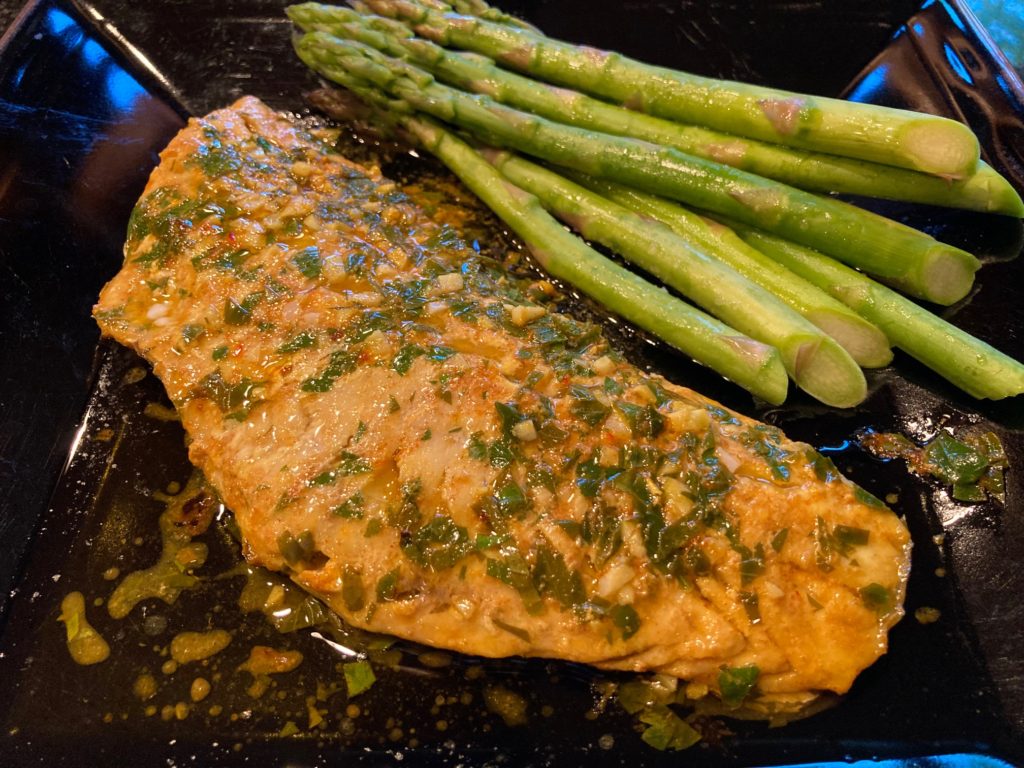
Enter Chermoula, a marinade used in Algerian, Libyan, Moroccan and Tunisian cooking. Best described as rich (olive oil), fresh (lemon juice) and spicy (cumin, paprika, cayenne, saffron and garlic), it’s the perfect marinade to put the snap back in Snapper. (the sass back in Bass?). The recipe provided below is from Joyce Goldstein of Square One fame; she also created the marinade recipe for steak in a previous blog post. The Chermoula is easy to assemble, just remember that you need to marinate the fish for 3 hours before cooking.
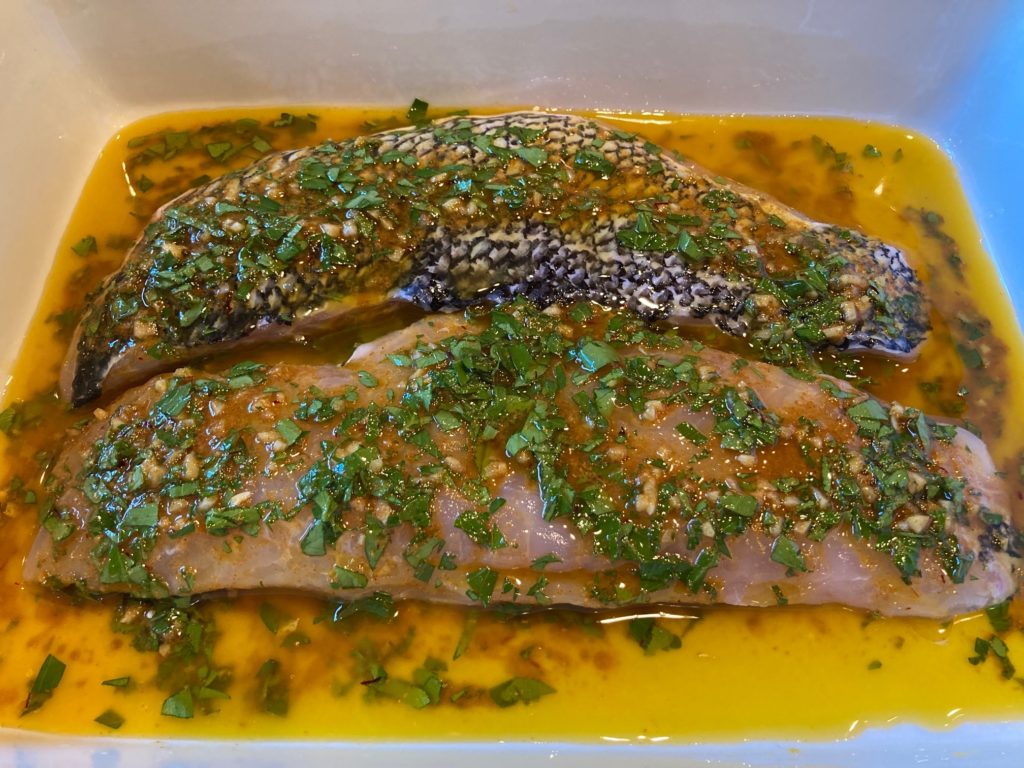
Trish and I tried many varietals of red, white and rosé for this dish, but quickly focused on the white varietals. As with many recipes, the sauce or marinade drives the pairing decision. To balance the lemon juice and spices in the Chermoula, the wine needs some acidity, but also some richness to complement the paprika, cayenne and cumin. Rosé failed to deliver the needed richness. Cali Chenin Blanc attacked with too much lemony citrus, overwhelming the spices in the Chermoula. It was a Côtes du Rhône Blanc that offered the best balance of acidity, richness and mouthfeel for this marinade.
Côtes du Rhône Blanc is a blend of a number of white grape varietals prominently grown in the Rhone region of France: Grenache Blanc, Clairette, Roussanne, Marsanne and Viognier are among the most commonly found varietals in these blends. We focused on two Rhone blends at opposite ends of the price spectrum.
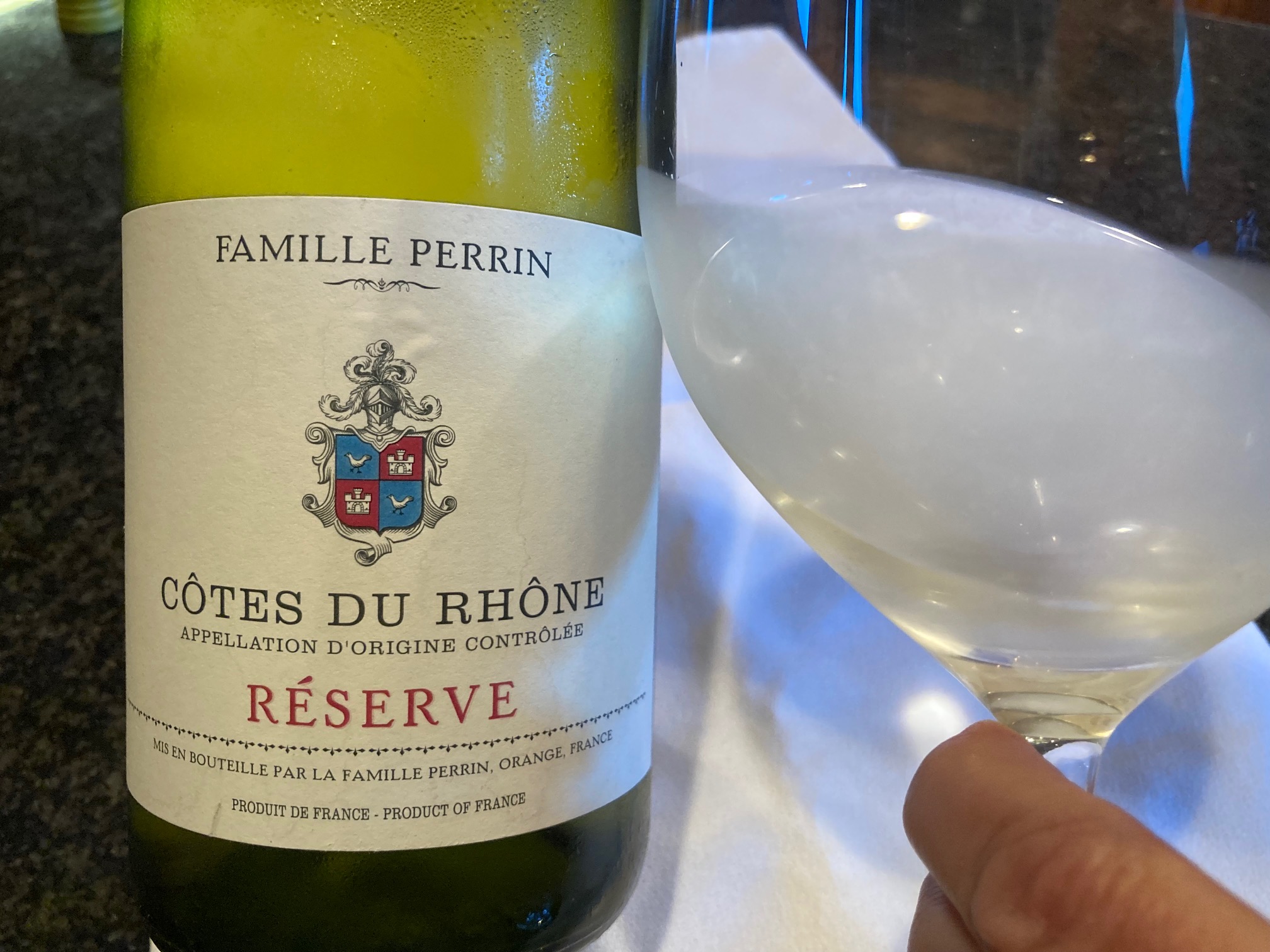
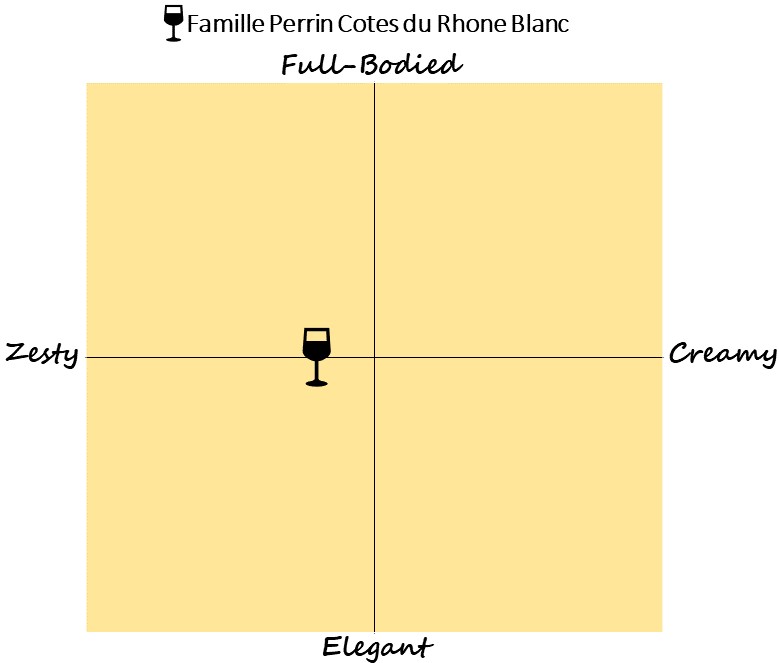
The Famille Perrin Côtes du Rhône Blanc Reserve 2021 is the entry-level wine of the Perrin family of Château de Beaucastel. The wine is inexpensive ($12) and widely available. Unoaked and composed of 50% Grenache Blanc, 20% Roussanne, 20% Marsanne and 10% Viognier, the blend delivers just enough fruit and freshness (acidity) to complement but not overpower the Chermoula. Dominant are the floral notes of Viognier, citrus from Grenache Blanc and Viognier, and a rich, round mouthfeel from the Roussanne. This wine is also available in the same blend using 100% organically grown grapes (look for “Nature” written in green ink across the label).
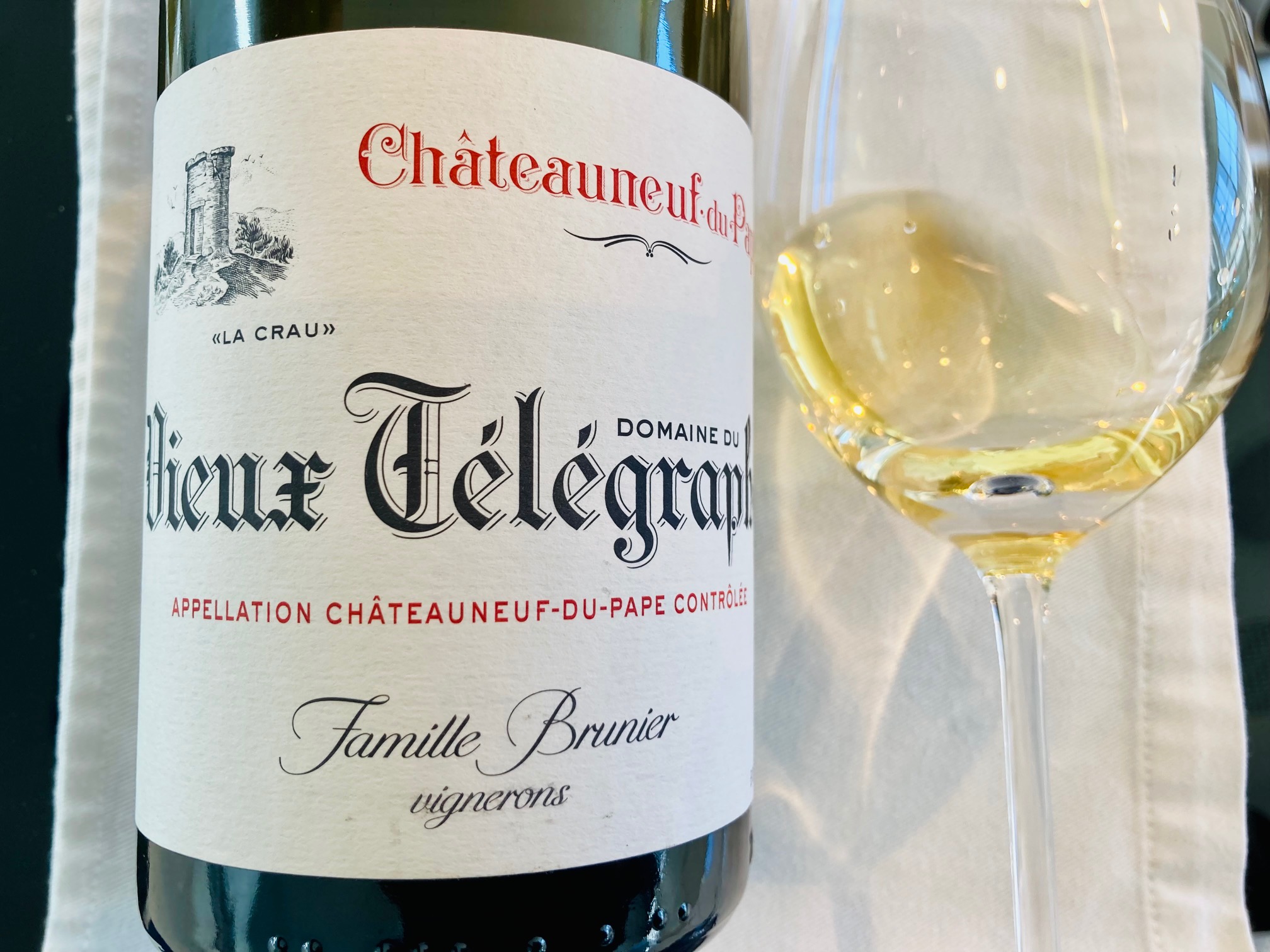
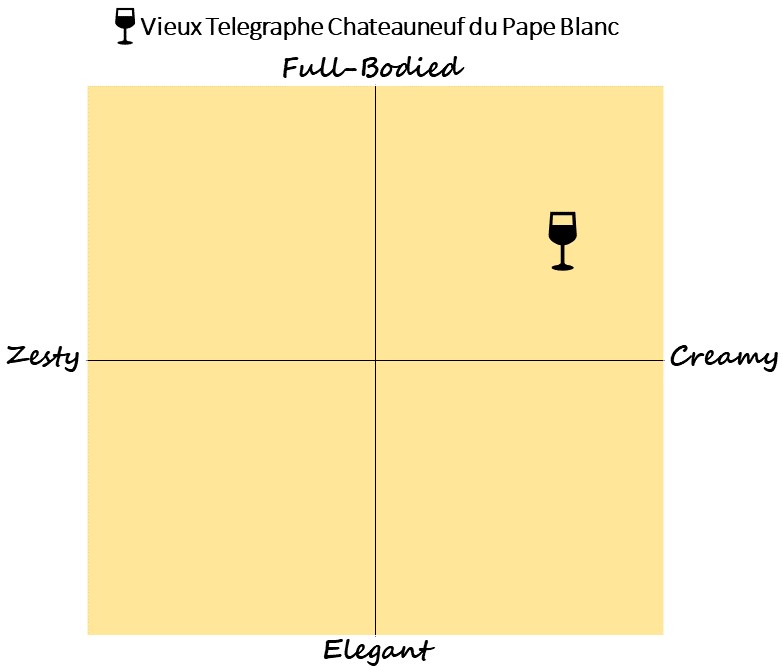
At the other end of the price spectrum, we recommend Vieux Télégraphe Châteauneuf du Pape Blanc 2019. The $85 price tag makes this more of a special occasion wine; note that it’s limited availability may make it difficult to find. This blend is composed of 40% Clairette, 25% Grenache Blanc, 25% Roussanne and 10% Bourboulenc, all hand-harvested from ~50-year-old vines. The juices are fermented separately in oak, blended, and then racked for about 11 months in oak barrels for added complexity. We tasted stone fruits, pear, a touch of honey, and as one reviewer said, “. . . white chocolate.” Compared to the Famille Perrin, the Vieux Télégraphe delivers more power, richness and aging potential. Budget permitting, this is our wine pairing of choice with this dish.
Both of these wines are considered low-acid and not really built to be an aperitif wine, but they are perfect as food wines, as this pairing asserts. We suggest the Perrin for a lighter-styled summer dinner, the Vieux Télégraphe for entertaining this fall/winter. Both wines should be served at 50-55 ̊ F to best realize their floral and fruit characteristics.
Give this Chermoula recipe a shot starting with the Perrin. Cheers!
Moroccan Baked White Fish – Wine Pairing
Notes
Recipe adapted from The Mediterranean Kitchen by Joyce Goldstein
Ingredients
- Marinade Ingredients:
- 1/2 cup fruity Olive Oil
- 1/4 cup fresh lemon juice
- 1/4 cup chopped fresh parsley
- 1/4 cup chopped cilantro
- 3 garlic cloves, peeled and finely minced
- 1-1/2 teaspoons paprika (smoked, if you have it)
- 1 teaspoons ground cumin
- 1/4 teaspoon cayenne pepper
- Salt and pepper to taste
Instructions
- Place all the ingredients in a mixing bowl and whisk together lightly.
- Pour some of the marinade in an oven-proof baking dish large enough to hold the fish fillets in a single layer.
- Place the fish fillets in the dish and pour the remaining marinade over the fish.
- Lightly rub the marinade into the flesh of the fish.
- Place the dish in the frig and marinate the fish for 3 hours.
- Bake the fish at 425 degrees, checking after 6-8 minutes, depending on thickness. Be careful not to overcook the fish.
- When done to your liking, plate the fish and spoon some of the Chermoula over the fish when serving.

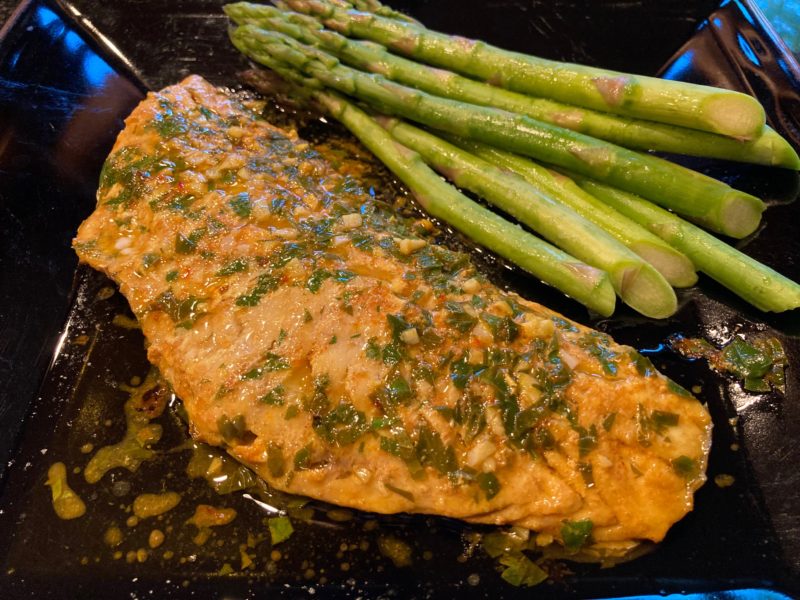
Richard says
Bake the fish in the marinade or take out?
Steven says
Bake it in the marinade!
merle stern says
Quite amazing! The fish looks amazingly melt in your mouth. And what impressive research the two of you do with the the wine pairing. Thank you for the effort and education.
Steven says
Thanks for commenting, Merle. We look forward to seeing you in Oct.
Tom says
Another excellent recipe and pairing; and salty word play!
Steven says
Thanks for commenting, Tom. We need to schedule a Facetime call.